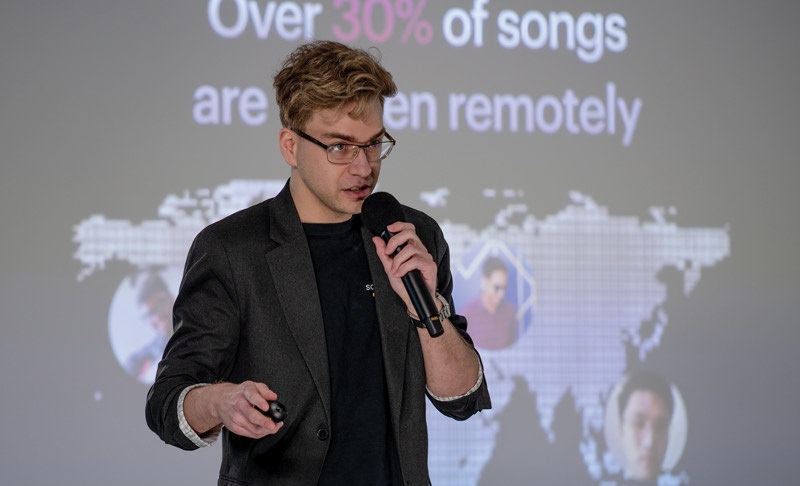Halifax-based Frenter, which sells an asset-management and geofencing software platform for heavy equipment, is deploying its hardware and software suite in the field for the first time on the back of raising $1.4 million and accumulating six figures worth of pre-sales.
Chief executive Zach Laberge said in an interview that the first unit will be deployed next week, with about another 100 in the weeks to come. The funding raise underpinning the rollout was led by Silicon Valley’s 1517 Fund, and included returning investor Jason Calacanis of Uber fame, as well as Nova Scotia telecom magnate Bill Barrett, Saint Mary’s University’s Venture Grade student investment fund and others.
Laberge originally founded Frenter in 2020 as an online platform for users to rent out small equipment like power tools. The business has since gone through a couple of pivots, made two acquisitions of other startups and raised a total of about $2.3 million across multiple funding rounds. Its current product lets heavy equipment operators and rental companies track and manage their fleets in real time with the help of GPS and telematics data, remotely monitoring the security and general utilization of heavy equipment.
“We started fundraising in November with the last idea, which was … commerce for rental companies,” said Laberge. “We said, ‘Okay, it’s working, but we think we can be bigger with something else. Can we build for more enterprise-sized companies?’
“And so we went back to market early this year with this new concept and raised our pre-seed funding off this new idea.”
He added that Frenter’s early Atlantic Canadian investors were more risk-adverse than their American counterparts with whom he has more recently been doing business. He believes working with cautious investors may have saved him from costly missteps and has helped create a track-record of capital efficiency that made the $1.4 million raise easier.
“I was 14 or 15 when I first raised money for Frenter … so having that money in tranches helped me make mistakes, but it's been isolated incidents, and then we raise a little bit more and we figure it out,” said Laberge, now 17.
Heavy equipment rental companies look set to be Frenter’s largest market, but Laberge also plans to service utility companies, mining operations, oil and gas projects and forestry businesses. The flexibility of the software means it has applications in essentially any context where heavy equipment is in use, says the company.
The unit being deployed next week is going to a company in Alberta, where the customer organization will be relocating its equipment frequently around the Edmonton area, offering a good test of the tracking system.
The rest of Frenter’s clients are similarly located in either British Columbia or Alberta, where Frenter in 2021 purchased another company, Rentbridge, which specialized in facilitating the rentals of smaller items like kayaks.
“I think we’re going to stay (on the west coast) just because there’s so many clients,” said Laberge. “There’s hundreds of companies just around Edmonton, which is where our head of CS (customer success) is based, so for implementation that’s great.
“And we are working on a couple of trials and deals in Atlantic Canada. If we can get something here, I would love that.”
The original version of Frenter that Laberge launched in 2021 was a “no code” product, meaning he used off-the-shelf tools to create his software. He said that approach offered a useful leg-up for Frenter’s original business model as an online marketplace, but as the company’s product offering has evolved, he has built an in-house engineering team, including the recently hired customer success chief, who is overseeing the rollout of the first units.
In total, Frenter now has 13 full-time employees, about a third of whom are programmers, along with salespeople and marketing staff.
The hardware portion of the Frenter platform, meanwhile, uses a white label remote monitoring device that Laberge said offers a proven track record of reliability, along with lower development costs and improved scaleability compared to an in-house product.
“We’re still negotiating our deal with (the hardware provider) right now, but they’re a massive player in the industry,” said Laberge. “We won’t have any issues with scaleability or anything like that. And that was a big priority for us.”










